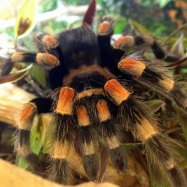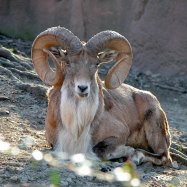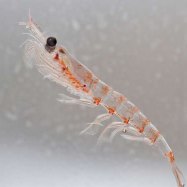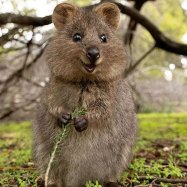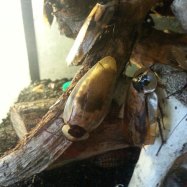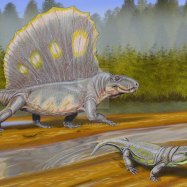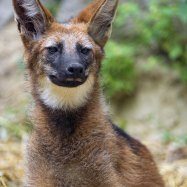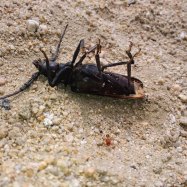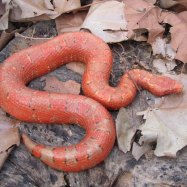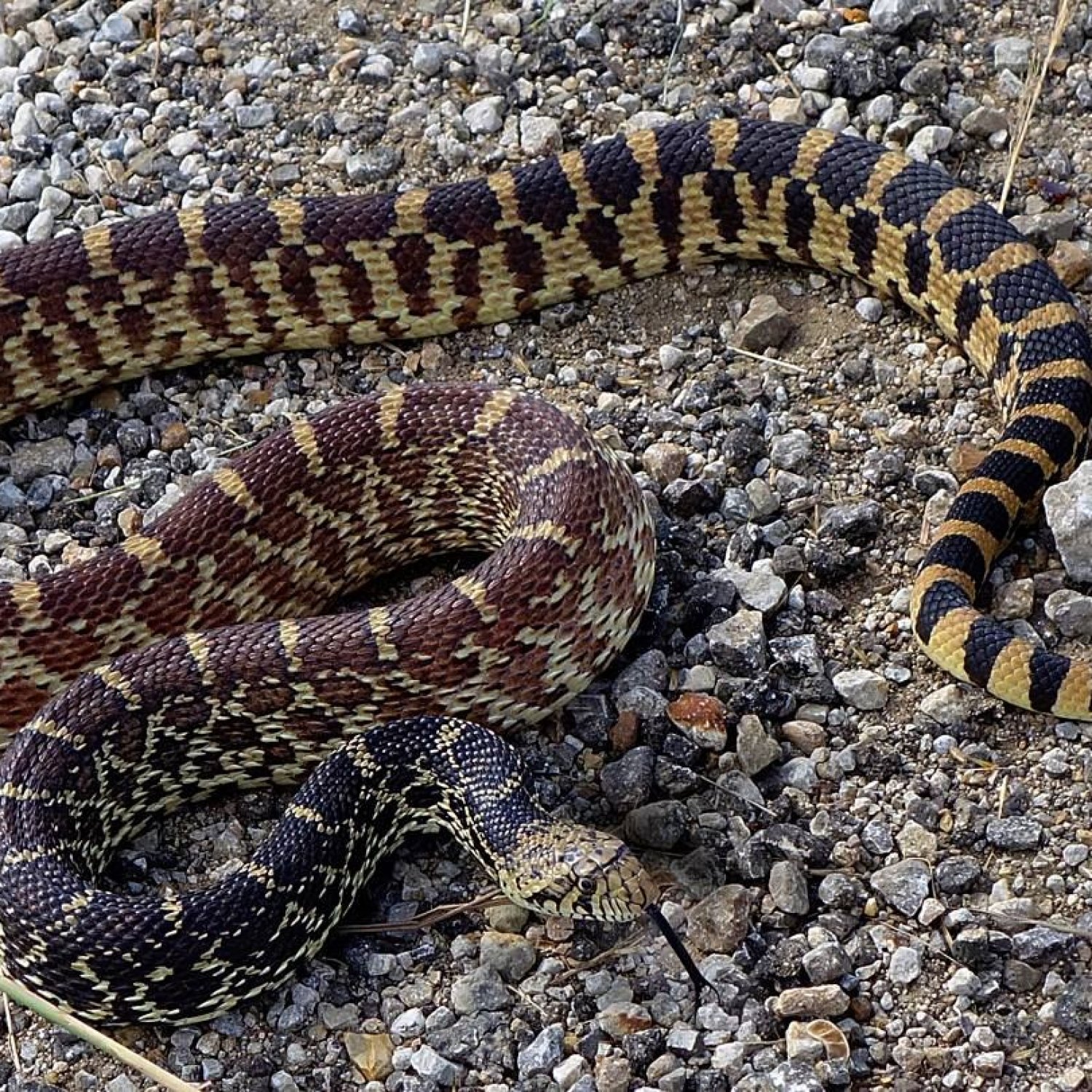
Bullsnake
4 to 6 feet (1.2 to 1.8 meters)
Bullsnakes, part of the Colubridae family, can reach 4 to 6 feet in length and are found in the Midwest and Western regions of the United States. These large, heavy-bodied snakes are easily identified by their thick neck and medium-length tail. Whether you encounter one in the wild or keep one as a pet, be sure to give the majestic Bullsnake the respect and space it deserves. #Bullsnake #Colubridae #Midwest #WestUS
Animal Details Summary:
Common Name: Bullsnake
Kingdom: Animalia
Habitat: Grasslands, prairies, deserts
The Mighty Bullsnake: Exploring the Characteristics of Pituophis catenifer sayi
The animal kingdom is full of fascinating creatures, each with its unique features and behaviors. Among these amazing animals is the bullsnake, known for its impressive size and striking appearance. Scientifically known as Pituophis catenifer sayi, this species is a non-venomous snake found in various parts of North America, particularly in the United States. In this article, we will delve into the characteristics and attributes of the mighty bullsnake, shedding light on what makes it stand out among other snakes Bullsnake.Origins and Habitat
The bullsnake belongs to the kingdom Animalia, phylum Chordata, and class Reptilia. It is a member of the squamata order and the colubridae family. This species is endemic to North America, with its range spanning across the United States. It is most commonly found in the Midwestern and western regions, where it inhabits grasslands, prairies, and deserts. The bullsnake has even been spotted in the mountains, scaling up to elevations of 9,000 feet.Feeding Habits
The bullsnake is a carnivorous reptile, meaning it feeds on a diet of other animals. Its primary prey includes small mammals, birds, and eggs. It is also known to eat other reptiles, such as lizards and other snakes. Due to its robust and muscular body, the bullsnake is a skilled hunter, able to take down larger animals with ease Blue Racer. It uses its sharp teeth and constriction abilities to overpower its prey and swallow it whole. Despite its fierce feeding habits, the bullsnake also serves as prey to larger predators such as hawks, eagles, and coyotes.Physical Features
The bullsnake is a striking creature, with its pale yellow or cream-colored body and darker brown or black blotches. These blotches often run down its back, giving it a distinct appearance. Interestingly, the pattern of these blotches can vary from individual to individual, making each bullsnake unique. Another notable feature of this snake is its head, which is slightly wider than its neck, giving it a triangular shape.In terms of size, the bullsnake is one of the largest snakes found in North America, with adults reaching lengths of 4 to 6 feet (1.2 to 1.8 meters). It has a heavy and thick neck, giving it a sturdy and robust appearance. Its body is also long and thick, tapering off into a medium-length tail. Unlike some other snake species, the bullsnake is not known for its speed or agility, relying instead on its strength and size to survive in the wild.
Behavior and Reproduction
Bullsnakes are typically solitary creatures, only coming together during the mating season. They are known to be territorial, often defending their territory from other snakes and animals. When threatened, they will often hiss loudly and shake their tails, mimicking the rattling sound of a rattlesnake. However, unlike their venomous counterpart, the bullsnake is non-venomous and relies on its intimidating size and defensive behavior to ward off potential predators.As for reproduction, bullsnakes are oviparous, meaning the females lay eggs. They typically breed in the spring, with females laying 4 to 30 eggs at a time. These eggs are then incubated for about 2 to 3 months until they hatch. The hatchlings are independent from birth and can survive on their own.
Conservation Status
Like many other snake species, bullsnakes face threats from habitat loss and fragmentation, as well as from being hunted by humans and other predators. However, due to their wide distribution and adaptability to various environments, they are not currently listed as endangered or threatened. However, it is important to note that bullsnakes are protected by law in some states, and it is illegal to capture, harm, or kill them. They also serve an essential role in the ecosystem by keeping prey populations in check, and any disturbance to their population could have a significant impact on the environment.Applications in Captivity
The bullsnake is a popular species among reptile enthusiasts and is often kept as a pet. In captivity, they require large enclosures with ample hiding spots and room to move around. They are also known to be more active and aggressive in captivity, making them less suitable for inexperienced snake owners. Bullsnakes are strict carnivores, and their diet in captivity should consist of rodents and other small animals.In addition to being pets, bullsnakes are also used in educational programs and snake exhibitions due to their impressive size and non-venomous nature. They also have a relatively long lifespan, with some individuals living up to 20 years in captivity.
The Versatility of the Bullsnake
The bullsnake is a highly versatile and adaptable species, able to thrive in various environments and habitats. Their impressive size and striking appearance make them a popular and sought-after species among reptile enthusiasts and researchers alike. They also serve an essential role in the ecosystem and are often used as educational animals, allowing people to observe and learn more about these fascinating creatures.As humans continue to explore and expand into new territories, it is crucial to protect and preserve the habitats of animals like the bullsnake. By understanding their behaviors and characteristics, we can better appreciate and coexist with these remarkable creatures. So the next time you spot a bullsnake in the wild or in captivity, take a moment to admire its beauty and marvel at the wonders of nature.

Bullsnake
Animal Details Bullsnake - Scientific Name: Pituophis catenifer sayi
- Category: Animals B
- Scientific Name: Pituophis catenifer sayi
- Common Name: Bullsnake
- Kingdom: Animalia
- Phylum: Chordata
- Class: Reptilia
- Order: Squamata
- Family: Colubridae
- Habitat: Grasslands, prairies, deserts
- Feeding Method: Carnivorous
- Geographical Distribution: North America
- Country of Origin: United States
- Location: Midwestern and western United States
- Animal Coloration: Pale yellow or cream-colored body with darker brown or black blotches
- Body Shape: Large, heavy-bodied snake with a thick neck and medium-length tail
- Length: 4 to 6 feet (1.2 to 1.8 meters)
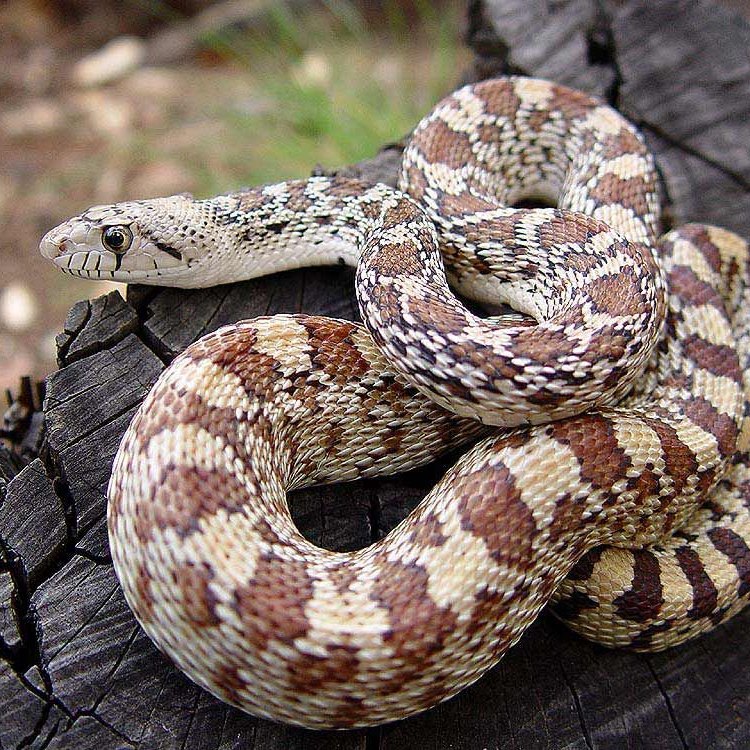
Bullsnake
- Adult Size: 4 to 6 feet (1.2 to 1.8 meters) in length
- Average Lifespan: 10 to 15 years
- Reproduction: Oviparous (lays eggs)
- Reproductive Behavior: Breeding occurs in spring or early summer
- Sound or Call: Hisses and vibrates its tail when threatened
- Migration Pattern: Non-migratory
- Social Groups: Solitary
- Behavior: Generally docile, but can become aggressive if threatened
- Threats: Habitat loss, road mortality, predation by humans
- Conservation Status: Least Concern
- Impact on Ecosystem: Helps control populations of rodents
- Human Use: Collected as pets and used in snake handling demonstrations
- Distinctive Features: Bullsnake has large, prominent eyes and a stout body
- Interesting Facts: Bullsnakes are known for their capability to mimic the behavior of rattlesnakes, including hissing and vibrating their tail to imitate the rattling sound. They are also excellent climbers and can scale trees and shrubs with ease.
- Predator: Coyotes, birds of prey, other larger snakes
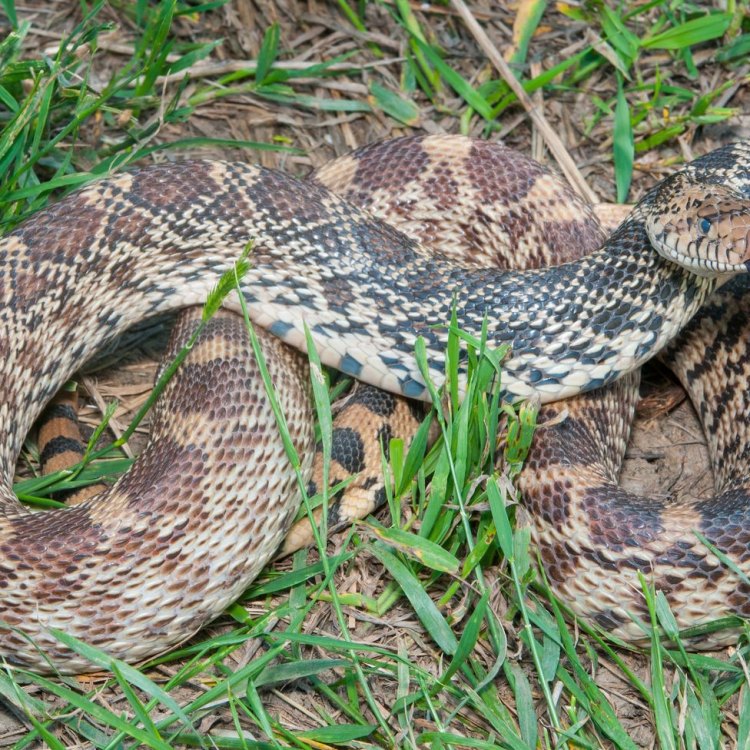
Pituophis catenifer sayi
The Mighty Bullsnake: A Fascinating Species of Snake
When we think of snakes, fear often comes to mind. However, not all snakes are dangerous and venomous. Some species, like the bullsnake, are quite harmless and can even be beneficial to the ecosystem. This fascinating species, also known as the gopher snake, is native to North America and has many unique features that make it stand out from other snakes PeaceOfAnimals.Com. Let's dive deeper into the world of bullsnakes and uncover all there is to know about this incredible reptile.Adult bullsnakes can reach a size of 4 to 6 feet (1.2 to 1.8 meters) in length, making them one of the larger snake species in North America. They have a stout and muscular body, with a pointed head and a slightly upturned snout. Their colors and patterns vary depending on their location but can range from light brown to olive green with dark, irregular blotches along their body. One of the distinct features of the bullsnake is its large, prominent eyes, giving it a fierce and intimidating appearance.
On average, bullsnakes have a lifespan of 10 to 15 years in the wild. However, with proper care, they can live up to 20 years in captivity Bowhead Whale. These reptiles are oviparous, which means they lay eggs instead of giving birth to live young. The breeding season for bullsnakes occurs in the spring or early summer, with females laying up to 12 eggs in a clutch. These eggs can take up to two months to hatch, and the hatchlings are independent from birth.
When it comes to their behavior, bullsnakes are known to be generally docile and non-aggressive. However, they will defend themselves if threatened. When provoked, they will hiss loudly and vibrate their tail, mimicking the sound of a rattlesnake. This behavior, along with their similar appearance, is a form of defense mechanism to deter predators. Bullsnakes are also excellent climbers and can scale trees and shrubs with ease, making them efficient hunters.
In terms of their communication, bullsnakes use a range of methods to convey their thoughts and emotions. Apart from hissing and vibrating their tail when threatened, they also use body language, such as coiling and striking, to communicate dominance or aggression. They also have a varied vocabulary of sounds, including a high-pitched hiss, a low grunt, and a loud hiss, to communicate with other snakes.
Bullsnakes are solitary creatures and are not known to migrate. They can be found in a variety of habitats, including prairies, grasslands, and scrublands, across the central and western regions of North America. Due to their adaptable nature, they can thrive in different environments, from deserts to forests. They are excellent burrowers and can often be found sunbathing near their underground shelters.
Unfortunately, like many other animals, bullsnakes face various threats in their natural habitat. Habitat loss due to human development is a major issue, as it affects their ability to find food and suitable shelter. Another significant threat is road mortality, as many snakes are killed while trying to cross busy roads. Additionally, humans also pose a danger to bullsnakes, as they are often killed out of fear or for their skin. These factors have led to a decline in their population, warranting the need for conservation efforts.
Despite these challenges, the conservation status of bullsnakes is currently listed as "Least Concern" by the International Union for Conservation of Nature (IUCN). This is due to their wide distribution and adaptability to different habitats. However, continued efforts are needed to protect and preserve their populations.
Bullsnakes play a significant role in their ecosystem and have a positive impact on the environment. As constrictors, they primarily feed on rodents, which helps in controlling their population and maintaining a balance in the ecosystem. This makes them valuable allies to farmers, as they can help keep rodent populations under control. In addition, their burrowing activity also helps in aerating and enriching the soil, making it more suitable for plant growth.
Due to their impressive size and unique behavior, bullsnakes have become a popular choice for snake enthusiasts. They are often collected as pets and can be found in many snake collections and zoos around the world. Bullsnakes are non-venomous and relatively easy to care for, making them a suitable choice for experienced reptile owners. They are also used in snake handling demonstrations as they can be trained to tolerate human interaction.
In conclusion, bullsnakes are a fascinating and unique species of snakes. From their impressive size to their ability to mimic rattlesnakes, they are truly one of a kind. While they may seem fearsome at first, they play an essential role in their ecosystem, and it is vital to protect and preserve their populations. So, the next time you come across a bullsnake, remember to appreciate and admire this incredible reptile.
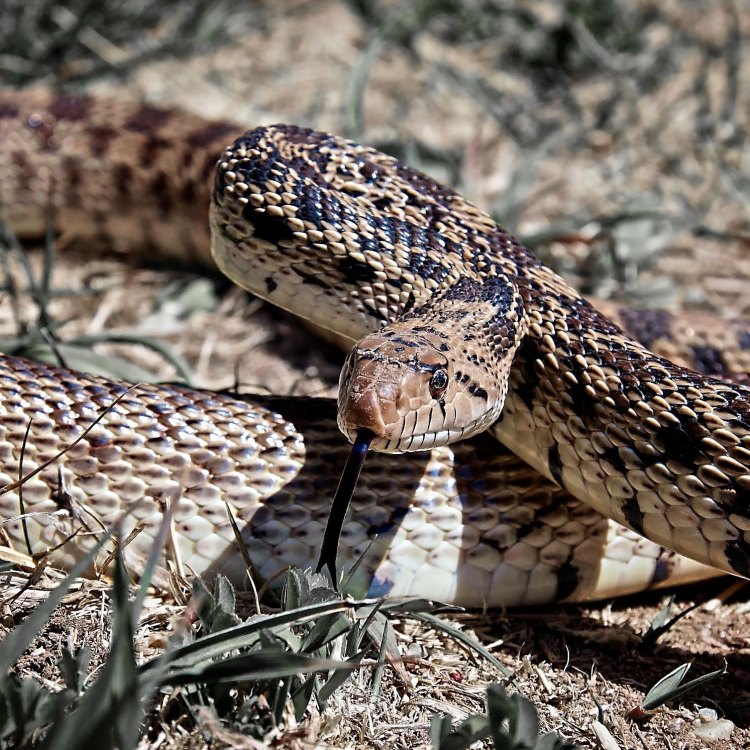
The Mighty Bullsnake: Exploring the Characteristics of Pituophis catenifer sayi
Disclaimer: The content provided is for informational purposes only. We cannot guarantee the accuracy of the information on this page 100%. All information provided here may change without prior notice.

